 August 14, 2014 John E. Ross, KD8IDJ, Editor
| ||||||
ARRL Teachers Institutes Chalk Up Another Successful Summer Thanks to the ARRL's 2014 Teachers Institutes on Wireless Technology, nearly 3 dozen teachers will be heading back to school this fall better equipped to incorporate science, technology, engineering, and mathematics (STEM) principles into their curricula. A dozen educators also returned home with an Amateur Radio license or a license upgrade.
Two dozen teachers from 16 states attended the two introductory courses under the guidance of Instructors Tommy Gober, N5DUX, and Larry Kendall, K6NDL -- a new instructor who is a middle school technology teacher in California. "The curriculum is designed for motivated teachers and other school staffers who want to learn more about wireless technology and bring that knowledge to their students," ARRL Education Services Manager Debra Johnson, K1DMJ, said. "Many expressed interest in coming back for more training with satellite communications, the MAREA [Mars Lander/Marine Amateur Radio Robotics Exploration Activity] program, and remote sensors and data collection." MAREA is a hands-on activity designed to engage students in learning programming skills for command and control of land or marine robots via Amateur Radio packet.
During this summer's advanced (TI-2) session on remote sensing and data gathering, Instructor Mark Spencer, WA8SME, demonstrated how to control the movements of a robot through data packets sent via the International Space Station (ISS) digipeater on 145.825 MHz. The satellite station at W1AW tracked the ISS during a July 10 pass. W1AW received and decoded movement instructions sent by Matt Severin, N8MS, in Eau Claire, Michigan. Those data then were transferred to the robot through a wireless UHF link. Ten teachers from nine states took part in the advanced course. All were Amateur Radio licensees and ARRL members. The introductory wireless technology course is a prerequisite to the advanced class. New this year at the TI-2 course was a marine research buoy. The buoy is outfitted with sensors to measure surrounding air and water temperature and pressure, and it includes a GPS tracking device. A PIC controls data sampling and storage. A Yaesu FT-270 handheld transceiver was used to transmit data via the Automatic Packet Reporting System (APRS).
"Each teacher received a buoy, assembled it, and learned how the data measurements from the electronic sensors are converted to useable information about the environment, how to program the PIC to sample the data, how to configure APRS and receive the data and upload it into Excel for evaluation and analysis," Johnson explained. "The buoy is a resource designed for classroom use as well as for easy deployment in local bodies of water. The teachers deployed their buoys in buckets, as they learned how to program and set up their buoy systems." Participants were enthusiastic in their anonymous post-session comments. "This seminar was my first experience with remote data and sensing using Amateur Radio," one advanced course participant said. Another educator called the buoy project "exciting." To date, the ARRL's Education & Technology Program has provided resources, including radio equipment, to more than 500 teachers and schools. Your contribution to support ARRL's successful efforts to promote Amateur Radio in schools and to provide professional development for teachers in wireless technology is welcome. Read more. Amateur Radio Operators Delighted With California City Council's Antenna Decision The nearly 300 radio amateurs who live in Poway, California, may erect antenna support structures of up to 65 feet with only a building permit and a courtesy notice to their neighbors. The Poway City Council unanimously approved the new ordinance on August 5. According to an August 6 Pomerado News report by Steve Dreyer, the Council "declined to adopt an alternative ordinance that would have required obtaining a special minor use permit" for structures between 35 and 65 feet. ARRL General Counsel Chris Imlay, W3KD, said the League has been working with Poway's Amateur Radio community for "a very long time" on the matter. Representing radio amateurs' interests in Poway was Felix Tinkov, whom Imlay described as "a very competent and experienced land use lawyer." Imlay noted that Tinkov is not a ham radio licensee but that he "gets Amateur Radio and did a stellar job of advocating for the hams." ARRL's Amateur Radio Legal Defense and Assistance Committee contributed funding for the effort. "It represented a big change in well-entrenched attitudes in Poway spanning decades, so this is a big win for us," Imlay said. Members of the Poway Amateur Radio Society (PARS) submitted a The subject of Poway's Amateur Radio antenna ordinance came up at the ARRL Board of Directors January 2014 meeting. ARRL General Counsel Chris Imlay, W3KD, reported that he'd been in contact with attorney Fred Hopengarten, K1VR, on behalf of Howard Groveman, W6HDG, of Poway, who sought to install a 59-foot crank-up antenna support structure. At the time Poway's ordinance set a maximum height of 35 feet and required a variance for anything taller, precluding Groveman's proposed antenna system. According to the Pomerado account, the option that the city council ultimately approved had been tweaked a bit from the version council members had received earlier from city staffers. That option would have required notification only to abutting property owners. This was expanded to a 250-foot radius, Dreyer's report said, adding that applicants would be responsible for mailing the notices. The notices would alert neighbors that an antenna would be erected, but neighbors would have no legal standing to impede or block construction as long as the proposed structure met the requirements of the city's ordinances. Installing an antenna support structure taller than 65 feet would require a new antenna permit and the approval of City Council. The Council asked for a report in 1 year regarding how the new procedures are working. Read more. "Pacific Endeavor-14" Exercise Stresses International Cooperation Military Auxiliary Radio Service (MARS) stations from Okinawa and the US West Coast joined members of the Canadian Forces Auxiliary Radio Service (CFARS) to participate in the first phase of the US Pacific Command's multinational "Pacific Endeavor-14" communication exercise that concluded on August 11 (UTC). The disaster scenario was a massive earthquake in Nepal that caused a large number of casualties and crippled the country's infrastructure.
Because MARS and CFARS may operate on both Amateur Radio and military frequencies, they can provide a bridge for radio amateurs outside the US and Canada to communicate with military units responding under the 24-nation Multinational Communications Interoperability Program in the disaster-prone Asia-Pacific region. Part 2 of the Pacific Endeavor exercise is set for August 19. During the second phase, traffic from Nepalese amateurs reporting on earthquake aftershocks will be relayed to the US Pacific Command. -- Thanks to Bill Sexton, N1IN, Army MARS Public Affairs Officer Canadian Radio Amateurs Will Join Special Event This Fall on 630 Meters Canadian radio amateurs will take part in the previously announced CW-only special event operation on 600/630 meters this fall. The Maritime Radio Historical Society (MRHS), which maintains the KPH/KSM commercial coast stations, also will participate in the event. ARRL 600 Meter Experimental Group Coordinator Fritz Raab, W1FR, said the MRHS participants will conduct a mini "Night of Nights" operation, with special attention to MF operation.
Amateur Radio operators in Canada gained access to the 472-479 kHz band on May 1. Three Canadian radio amateurs will conduct cross-band communication tests with amateurs operating on 80 and 40 meters. Joe Craig, VO1NA, in Torbay, Newfoundland, will transmit on 477.7 kHz starting at 2130 UTC on October 31 and continuing until 0130 UTC on November 1, and listen on 3562 and 7062 kHz. On the West Coast, Steve McDonald, VE7SL, on Mayne Island, British Columbia, will be active November 1, 0200-0600 UTC, transmitting on 473.0 kHz and listening on 3566 and 7066 kHz. John Gibbs, VE7BDQ, in Delta, British Columbia, will be on the air from 0100 until 1000 UTC on November 1, transmitting on 474.0 kHz and listening on 3536 kHz. All stations either will call CQ or run "VVV" marker beacons while listening on their respective receive (QSX) frequencies, which will be included in the CQ or marker beacon. "The official time period is 0000 UTC on November 1 through 2359 UTC on November 2," Raab said. "These include Friday and Saturday evenings in North America. Stations on the East Coast may start a little earlier if they like." All activity will occur between 465 and 480 kHz and between 495 and 510 kHz. Read more. W1AW Centennial Operations Relocate on August 20 (UTC) The ARRL Centennial W1AW portable operations taking place throughout 2014 from each of the 50 states and now in Oklahoma will relocate at 0000 UTC on Wednesday, August 20 (the evening of August 19 in US time zones), to Ohio (W1AW/8) and North Dakota (W1AW/0). During 2014 W1AW will be on the air from every state (at least twice) and most US territories, and it will be easy to work all states solely by contacting W1AW portable operations.
Working W1AW/x from each state is worth 5 points per mode/contact, even when working the same state during its second week of activity. To earn the "Worked all States with W1AW Award," work W1AW operating portable from all 50 states. (Working W1AW or W100AW in Connecticut does not count for Connecticut, however. For award credit, participants must work W1AW/1 in Connecticut.) A W1AW WAS certificate and plaque will be available. The ARRL has posted an ARRL Centennial QSO Party leader board that participants can use to determine how many points they have accumulated in the Centennial QSO Party and in the W1AW WAS operations. Log in using your Logbook of The World (LoTW) user name and password, and your position will appear at the top of the leader boards. Results are updated daily, based on contacts entered into LoTW. The schedule has been updated recently. Check it often to make sure you don't miss out on working a state. W1AW Centennial Operations Head to the Pacific in October and November The ARRL Centennial W1AW portable operations will be heading to the Pacific this fall. From October 8 until October 21, W1AW/KH0 will be on the air from The Radio Space of Tinian, on Tinian Island in the Northern Mariana Islands. Ten operators from the US and Japan will support the activity.
Starting in early November, W1AW/KH8 will fire up from American Samoa. Heading up the operation is Mike Goode, N9NS, who has at least 10 "seasoned DXpeditioners" to operate. The group has received permission from the ARRL to operate for longer than 1 week, and Goode anticipates that W1AW/KH8 could take to the air as early as November 1, continuing operation through November 12, although the current W1AW Centennial QSO Party schedule indicates that operation will run November 5 until November 18. The team will put up at the Maliu Mai Beach Resort, which has hosted other Amateur Radio operations, and their primary operating location will be that of the late Larry Gandy, AH8LG, compliments of his widow Uti, KS6FO. Plans call for three or four stations active on all bands from 1.8 through 28 MHz. The group may also set up a station at the hotel, and outside of their W1AW operation, team members may operate as KH8Q or using their home call signs /KH8. As with other Centennial QSO Party contacts, confirmation will be via Logbook of The World (LoTW). Stations contacting W1AW/KH0 or W1AW/KH8 may be able to request cards directly or via the bureau through use of an Online QSL Request System (OQRS). QSLs cards are not necessary, however, and in due course, all QSLs will be sent via the bureau. -- Thanks to The Daily DX Radio Amateur Named to FEMA National Advisory Council A Nevada radio amateur is among 12 new members appointed to the Federal Emergency Management Agency (FEMA) National Advisory Council (NAC). FEMA announced the appointments by FEMA Administrator Craig Fugate, KK4INZ, this week. New NAC member Chris Smith, W4HMV, of Sparks, Nevada, was one of the speakers at this year's ARRL Nevada Section Convention.
"FEMA is just one part of our nation's emergency management team," Fugate said in a statement. "The National Advisory Council serves a vital role in guiding our plans and strategies by ensuring we remain informed by diverse viewpoints and experiences from every sector of society. I value the expertise and input of each of these members, and appreciate their dedication and commitment to ensuring effective emergency management." Chris Smith comes from an Amateur Radio family. His father is Bill Smith, W7HMV, an ARRL Life Member and Emergency Coordinator for Clark County Nevada. The NAC, which can include up to 35 members, provides recommendations to the FEMA Administrator on a variety of emergency management issues. "For example," a FEMA news release said, "the NAC recently made recommendations regarding regional response and recovery capabilities as well as regarding mutual aid agreements among different units of government." Most NAC appointments are for 3-year terms. Ham Radio Payload to Circle the Moon A lunar flyby with a ham radio payload transmitting JT65B mode on 145.990 MHz is expected to take place toward the end of this year, giving earthbound radio amateurs the opportunity to receive some otherworldly DX signals as the payload flies around the Moon.
The orbiter is one of the test models for Beijing's new lunar probe Chang'e-5, which will land on the moon, collect samples, and return to Earth. The launch, planned for 4th quarter 2014, is aimed at testing technologies that are vital for the success of the spacecraft. The orbiter will be launched into Lunar Transfer Orbit and then perform a lunar flyby before re-entering Earth's atmosphere after 9 days. The orbiter, which arrived by air in Xichang, Sichuan, on Sunday, August 10, has been transported to the Xichang Satellite Launch Center. -- Thanks to AMSAT-UK AMSAT Issues Call for 2014 Space Symposium Papers AMSAT has issued a call for papers for its 32nd AMSAT Annual Meeting and Space Symposium. This year's event takes place the weekend of October 10-12 at the DoubleTree Hotel, Baltimore-Washington International Airport (BWI), Linthicum, Maryland.
The AMSAT Board of Directors will meet October 9-10. Technical presentations on satellite design and operating begin on October 10. The annual general meeting takes place on the afternoon of October 10. An ARISS Operations Team meeting will be held on Sunday, October 12. -- Thanks to AMSAT News Service via the 2014 Baltimore Symposium Committee Shortwave Broadcasting "of Marginal and Continuously Declining Impact," Committee Concludes The Broadcasting Board of Governors (BBG) Special Committee on the Future of Shortwave Broadcasting foresees a dim outlook for the medium. The Committee this month released its assessment of the current and projected use of shortwave radio as a platform for programming by US international media.
Among other things, the Committee reviewed audience-based research, including analysis of user experiences and user choices, as well as opportunities and limits of the medium. It also examined "the characteristics and listening experience of shortwave users in the BBG's target markets, the use of shortwave radio by the BBG's networks, the networks' relative success in reaching their target audiences through shortwave, and the costs of operating the BBG's shortwave transmitting facilities." The panel recommended that the Broadcasting Board of Governors take "an aggressive approach to reduce or eliminate shortwave broadcasts where there is either minimal audience reach or the audience is not a target audience based on the BBG's support of US foreign policy." The report said that its evidence suggested that declining use of shortwave radio is primarily due to the availability of high-quality content on "preferred platforms" such as AM and FM radio, podcasts, and mobile streaming, which are more widely used for audio consumption.
The report also said that shortwave radio was "a relatively expensive platform to operate and maintain" and that digital shortwave radio (ie, Digital Radio Mondiale or DRM) "is unlikely to become an established mass media distribution methodology in enough of the BBG's current or future markets to justify the costs." The committee said it largely supports the reductions in shortwave radio broadcasts previously approved by the Board. Those include recent cutbacks in a number of Voice of America, Radio Free Europe/Radio Liberty, and Radio Free Asia broadcasts. But, the committee added that given the current situation in Ukraine and nearby states with significant Russian-speaking populations, it recommended that the BBG revise its fiscal year 2014 operating plan to ensure that "shortwave broadcasts in Russian to Russia and the Caucasus be continued at current levels, subject to re-evaluation during FY16 budget formulation processes." A fact sheet also is available. -- Thanks to Southgate Amateur Radio Club News via G0SFJ NPR Program Features WRTC2014 The National Public Radio weekend program "Only a Game" with host Bill Littlefield featured World Radiosport Team Championship 2014 "If anything, I felt the piece was flying by in her attempt to capture so much of what was going on," he told ARRL. Thompson said one of the goals of WRTC2014 was to use the international competition as a platform to promote Amateur Radio and radiosport. "Only a Game" is produced by WBUR in Boston. The WRTC2014 website includes a compilation of media coverage of the event. Radio Amateurs Named to Order of Canada Two radio amateurs were among those recently named to the Order of Canada. The list of recipients included telecommunications researcher Veena Rawat, VA3ITU, and Canadian astronaut Chris Hadfield, VA3OOG/KC5RNJ.
Hadfield was honored as an Officer of the Order of Canada for "his commitment to promoting scientific discovery and for sharing the wonders of space exploration with the world." Hadfield was the International Space Station Expedition 35 commander during his 2013 duty tour. The Order of Canada is the third-highest award in Canada, to recognize outstanding merit or distinguished service. Support ARRL by Shopping at AmazonSmile If you already shop on Amazon, or if you're looking for the perfect gift for a family member or friend, we invite you to shop at AmazonSmile and choose American Radio Relay League Inc (ARRL) as your charity A Century of Amateur Radio and the ARRL A comprehensive and fascinating article on long-delayed echoes (LDEs) appeared in the February 1970 QST. LDEs are signals that have been transmitted, go away somewhere, and then are heard -- at low signal levels but often with good readability -- 10 or more seconds later. They were first heard on the ham bands in 1927. An article in the May 1969 QST described them and asked for reports from readers who had heard them. The 1970 follow-up article summarized more than 40 reports. A May 1971 QST article later reported on more than 90 observed LDE events. The effort to get more amateurs on the VHF and UHF bands continued, with QST publishing articles on 432 MHz transmitters, 220 MHz kilowatt amplifiers, state-of-the-art low-noise receiver preamplifiers, new propagation modes and how to use them, portable beams for 2 meter mountain-topping, and more. The number of hams using very low power -- QRP -- also continued to grow, with equipment and portable HF antennas featured in QST articles, as well as reports of QRP use by hikers and mountain-climbing hams.
Repeaters for 2 meter FM operation were becoming very popular, and their numbers were growing rapidly. QST described how to build repeater duplexers, control equipment, antennas, and control links, and it kept repeater control operators informed of relevant FCC rules as they were developed. Amateur Radio satellites continued to attract more and more attention. QST articles provided information to encourage and help hams get up and running on the satellites. Topics covered in those many articles included how to plot satellite orbits, build beams that could be rotated in both azimuth and elevation, construct circularly polarized beams, determine when you can use the satellites for contacts over a given path, along with other tips and information. As each new OSCAR was built and launched, QST carried announcements and information on how to use it. A nice article on "The $22,000,000.00 Ham Shack" appeared in the April 1970 QST. No, it wasn't an April Fool's article. It told of the first flight of the new Boeing 747, with WA7IBL using one of the aircraft's radios to make HF SSB contacts. As the 1970s rolled along, many homeowners purchased hi-fi and stereo audio equipment. Most consumer electronic equipment was not built to reject interference from ham transmitters, however. Articles in QST during the 1970s told hams how to deal with those interference issues. In 1970, the much-anticipated Heath SB-220 HF kilowatt linear amplifier came on the market, with a selling price of $350. As transistors' performance continued to improve, homebrew solid-state equipment became progressively more popular. QST reported on many interesting projects that used transistors, including VFOs, QRP rigs, receivers and receiver preamplifiers, transmitting linear amplifiers, and accessories. -- Al Brogdon, W1AB The K7RA Solar Update Tad Cook, K7RA, Seattle, Washington, reports: Solar activity showed further signs of weakness this week, with the average daily sunspot number dropping 41.8 points to 94.9, while average daily solar flux declined 36.5 points to 113.1. In the 45-day forecast for solar flux, it was surprising to see on August 3 a new solar flux prediction of 150 for August 31 through September 3. I had anticipated that this prediction would drop, to be more in line with predicted values before and after that period, and in the August 11 forecast, this is just what happened. The predicted solar flux for those dates was revised to 125 for August 31 through September 2, then to 120 on September 3, where it remains today.
Predicted planetary A index is 10 on August 14, 8 for August 15-16, 5 for August 17-21, then 8, 5 and 8 on August 22, 23, and 24, 5 for August 25-27, 8 for August 28-29, then 5, 12, 10 and 8 on August 30 through September 2, 5 for September 3-5, 8 on September 6, 5 for September 7-8, 8 on September 9, and 5 until September 18. This weekly "Solar Update" in The ARRL Letter is a preview of the "Propagation Bulletin" issued each Friday. The latest bulletin and an archive of past propagation bulletins are on the ARRL website. In this Friday's bulletin look for an updated forecast and reports from readers. Send me your reports and observations. Just Ahead in Radiosport
See the ARRL Contest Calendar for more information. Upcoming ARRL Section, State and Division Conventions and Events
Find conventions and hamfests in your area. ARRL -- Your One-Stop Resource for
Subscribe to...
Free of charge to ARRL members...
| ||||||
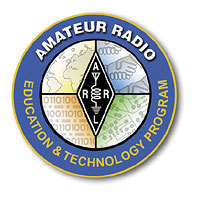 As part of its outreach to schools, the ARRL Education & Technology Program (
As part of its outreach to schools, the ARRL Education & Technology Program (.JPG)
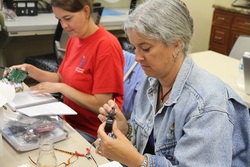
 technical report to the City Council. The report concluded that antenna support structures of up to 65 feet would represent "reasonable accommodation" for Amateur Radio communication under PRB-1, due to the area's varied topography.
technical report to the City Council. The report concluded that antenna support structures of up to 65 feet would represent "reasonable accommodation" for Amateur Radio communication under PRB-1, due to the area's varied topography.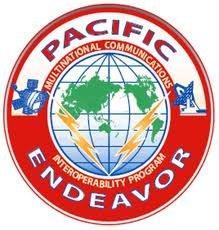 MARS and CFARS members scanned "emergency center of activity" frequencies on the Amateur Radio HF bands, listening for information on the simulated disaster from Nepalese amateur operators. Unfortunately, poor propagation prevented Nepalese Amateur Radio operators from being heard by any other participants. The Army MARS gateway station at Fort Huachuca, Arizona, and the 311th MARS gateway in Okinawa then simulated on-scene traffic, allowing the other participants to complete the exercise. Details of the exercise will be reported during the Global Amateur Radio Emergency Communications (GAREC) conference August 12-15. GAREC-2014 is being held in conjunction with the Huntsville (Alabama) Hamfest.
MARS and CFARS members scanned "emergency center of activity" frequencies on the Amateur Radio HF bands, listening for information on the simulated disaster from Nepalese amateur operators. Unfortunately, poor propagation prevented Nepalese Amateur Radio operators from being heard by any other participants. The Army MARS gateway station at Fort Huachuca, Arizona, and the 311th MARS gateway in Okinawa then simulated on-scene traffic, allowing the other participants to complete the exercise. Details of the exercise will be reported during the Global Amateur Radio Emergency Communications (GAREC) conference August 12-15. GAREC-2014 is being held in conjunction with the Huntsville (Alabama) Hamfest.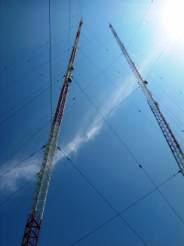 "This will give listeners the best chance of copying their MF signals by operating during the fall and extending our operating hours well into the evening hours Pacific time," he said. Coast station KPH will keep 500 kHz and 426 kHz active, as well as HF, with special messages, press and weather and will verify listener reports. Raab pointed out that the event will coincide with the 106th anniversary of the Berlin Treaty that created the international distress frequency at 500 kHz.
"This will give listeners the best chance of copying their MF signals by operating during the fall and extending our operating hours well into the evening hours Pacific time," he said. Coast station KPH will keep 500 kHz and 426 kHz active, as well as HF, with special messages, press and weather and will verify listener reports. Raab pointed out that the event will coincide with the 106th anniversary of the Berlin Treaty that created the international distress frequency at 500 kHz.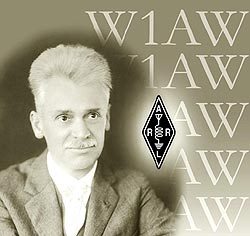 The
The 
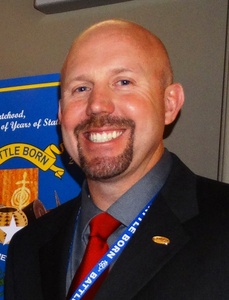
 China has
China has  Proposals for papers, symposium presentations and poster presentations are invited on any topic of interest to the Amateur Satellite community. Final copy must be submitted by September 15 for inclusion in the printed proceedings. Send abstracts and papers to
Proposals for papers, symposium presentations and poster presentations are invited on any topic of interest to the Amateur Satellite community. Final copy must be submitted by September 15 for inclusion in the printed proceedings. Send abstracts and papers to  "United States international media must optimize delivery by audience/market," one main finding concluded. "While there is still a critical need for shortwave in key countries, it is a medium of marginal and continuously declining impact in most markets." The report said that even in countries where shortwave radio will enjoys significant usage levels, "audiences will migrate to other platforms as they become more accessible."
"United States international media must optimize delivery by audience/market," one main finding concluded. "While there is still a critical need for shortwave in key countries, it is a medium of marginal and continuously declining impact in most markets." The report said that even in countries where shortwave radio will enjoys significant usage levels, "audiences will migrate to other platforms as they become more accessible."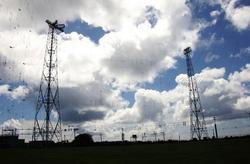 The committee found that shortwave use does not increase during times of crisis. "Audiences continue to use their existing platforms (TV, FM, and the Internet) or seek out anti-censorship tools, including online firewall circumvention, private chat software, flash drives, and DVDs to access content," the report said.
The committee found that shortwave use does not increase during times of crisis. "Audiences continue to use their existing platforms (TV, FM, and the Internet) or seek out anti-censorship tools, including online firewall circumvention, private chat software, flash drives, and DVDs to access content," the report said.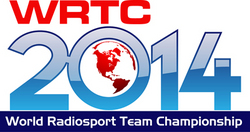 (
(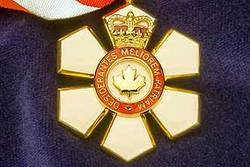 Rawat was honored as an Officer of the Order of Canada for contributions to telecommunications engineering and for her leadership in establishing a global regulatory framework for radio spectrum management. She has served as president of the Communications Research Centre at Industry Canada and as a vice president at Research in Motion. Rawat chaired the World Radiocommunication Conference in 2003 and was instrumental in resolving the 40 meter "harmonization" issue that led to shifting international broadcasters from part of the 7 MHz band.
Rawat was honored as an Officer of the Order of Canada for contributions to telecommunications engineering and for her leadership in establishing a global regulatory framework for radio spectrum management. She has served as president of the Communications Research Centre at Industry Canada and as a vice president at Research in Motion. Rawat chaired the World Radiocommunication Conference in 2003 and was instrumental in resolving the 40 meter "harmonization" issue that led to shifting international broadcasters from part of the 7 MHz band.
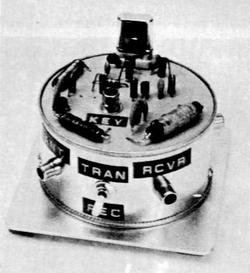
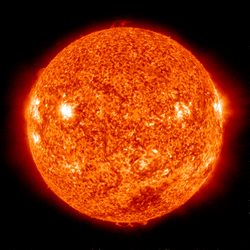 That 45-day forecast predicts solar flux at 100 on August 14, 105 on August 15, 110 for August 16-17, 105 for August 18-19, then 110, 100 and 110 on August 20-22, 115 for August 23-24, 120 for August 25-26, then 125 and 130 on August 27-28, and 125 for August 29 through September 2. Flux values are expected to gradually drift upward to 135 by September 24, the day following the fall equinox.
That 45-day forecast predicts solar flux at 100 on August 14, 105 on August 15, 110 for August 16-17, 105 for August 18-19, then 110, 100 and 110 on August 20-22, 115 for August 23-24, 120 for August 25-26, then 125 and 130 on August 27-28, and 125 for August 29 through September 2. Flux values are expected to gradually drift upward to 135 by September 24, the day following the fall equinox.







